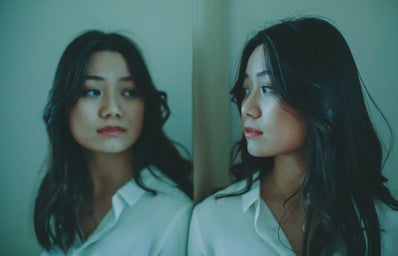First thing’s first: there is nothing wrong with colored hair. As a woman with pink hair, I find coloring your hair is a fun way of expressing yourself. However, when a few bright streaks of purple or red are Western Hollywood’s go-to for Asian women (especially East Asian women), you start to wonder why this pattern is so prevalent.
One of my favorite movies growing up was Big Hero Six, a film about a group of college students and a genius fourteen year old kid who band together using science and comic books to become superheroes. But one thing about the movie that doesn’t sit as well as it used to when I was a kid, is the fact that GoGo Tomago has purple streaks in her hair. It’s as if she can’t be considered a rebel or an independent thinker without this small detail of her hair.
Now you may be thinking that hair color isn’t necessarily a big deal, and for the majority of the time, it isn’t. But what can seem like a cool way of making a character stand out more, is in actuality, a very common way that Asian women are westernized in American society. The colored streaks of hair are a repetitive and offensive trope that implies that there is no variety of East Asian women.
There have been few Asian women portrayed within the film and television industry, and those portrayals rely heavily on stereotypes. Many recent and past studies have shown that the majority of Asian women within these media are exoticized and hypersexualized. America – and specifically in this case Western Hollywood – has had an extensive record of supporting and portraying these stereotypes within the media. This hypersexualization of them began before the film and television industry was even birthed. Before the Chinese Exclusion Act of 1882, there was the Page Act of 1875. The Page Act prohibited all Asian women, but was targeted more towards Chinese women, from entering the United States on the basis that they were “disease ridden” women who wanted to enact “lewd and immoral” behavior. The Act basically deemed Asian women as diseased prostitutes who were temptations for white men, causing the Page Act to be one of the first accountable moments of legal action taken against Asian women in American society. Its effect still resonates within society through media by the portrayal of stereotypes and the enablement of the fetishization of Asian women. So take the colored streaks out – and what are you left with? A character entirely based on a stereotype, with a heavy sex appeal, and a submissive personality that appeals to Western society with little to no screen time or lines. To simplify it, it’s called bad writing.
One common stereotype used is the “Subservient Asian woman” stereotype and instead of trying to subvert this frankly xenophobic and sexist stereotype, the media industry is only strengthening it by adding the colored streaks of hair. The issue with the colored streaks of hair is that the audience will assume that the majority of Asian women are meek and submissive. By creating a character that is entirely based on the idea that adding the streak of colored hair makes them identifiable and independent thinkers, that stand out from “regular” Asian women, there’s the implication that Asian women with their natural hair color are submissive by nature – which is simply not true.
There are other, less offensive and non-stereotyped options when writing Asian women – and women in general. These writers have been working off of stereotypes and enabling the ignorance of Western society for far too long. Not to say that all women characters shouldn’t have colored hair – they all rock the colors they wear. But they also don’t need to be portrayed as the “Manic Pixie Dream Girl” or “Subservient Hypersexualized Asian woman” in order to be considered interesting or appealing to the male gaze. They need to be represented accurately and not just as side characters who do all the work for the main male characters and get no credit. Asian women deserve representation within the film and television industry – and it is long overdue for more diversity and inclusion within those media. The rest of the world is and has been ready for inclusive portrayals of minorities, we’re just waiting on Hollywood to catch up.


